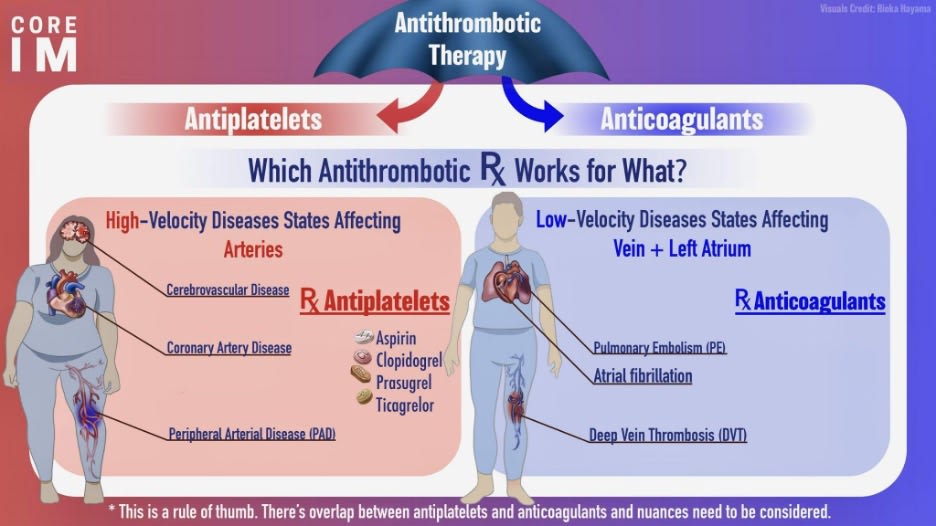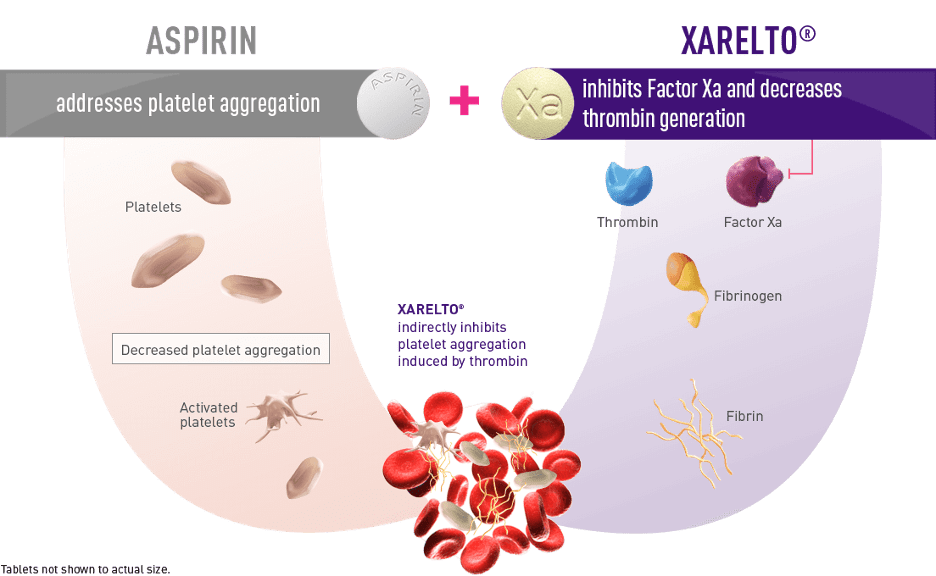Table of Contents
I. Understanding Blood Thinners
V. Save On Your Next Xarelto Order
For more than a decade, Xarelto has stood out as a blood thinner that’s not only effective for reducing the risk of blood clot and stroke, but is also convenient for patients and providers. This major advantage has increased patient adherence and thus led to better health outcomes in many cases.
That said, it’s true that Xarelto hasn’t been available nearly as long as some of its counterparts, leading many patients to wonder if it works as well as other options like warfarin, which has been on the market for nearly 75 years.
The short answer is yes—Xarelto is safe and effective—but we’ve written this guide to dive into the topic in more detail. Read on for everything you need to know about how Xarelto works, its safety and efficacy, and how to access it safely and affordably with a prescription from your healthcare provider.
Quick Takeaways:
- Xarelto is a direct oral anticoagulant drug (DOAC) that works by inhibiting the Factor Xa protein.
- Multiple studies have proven that Xarelto is safe and effective. That said, it comes with potential side effects that must be discussed by patients and providers.
- The cost of Xarelto can be prohibitive because of its brand-name status. Canadian pharmacies offer a more affordable alternative for U.S. patients taking the medication.
Understanding Blood Thinners
Blood thinners is the term used for anticoagulant and antiplatelet drugs, both of which play a crucial role in managing and preventing blood clots.
Anticoagulants interrupt the process of blood clot formation by targeting specific proteins in the blood, which is vital for reducing the risk of stroke. These are often used for conditions where there's a risk of blood clots forming in the veins (like deep vein thrombosis or pulmonary embolism).
Antiplatelets, on the other hand, inhibit the platelet cells responsible for blood clotting from clumping together. They are typically used for preventing blood clots in arteries, which is important in conditions like heart attacks and strokes caused by arterial blockage. They are often prescribed to patients with a history of coronary artery disease, heart attacks, stents, or other heart surgeries.

Xarelto (generic name rivaroxaban) is an anticoagulant. More specifically, it’s a direct oral anticoagulant (DOAC), which does not require frequent blood tests and offers the advantage of a fixed dosage, making it a convenient and desirable option for many patients.
What is Xarelto?
Since becoming available on the market in 2011, Xarelto has gained widespread use in the prevention and treatment of various blood clot-related conditions. Its differentiator is its mechanism of action, which is to directly inhibit Factor Xa, a protein that plays a crucial role in the blood clotting process.

As mentioned, this helps to prevent the formation of harmful clots without the need for routine blood monitoring, a common requirement with older anticoagulants like warfarin.
Xarelto is commonly prescribed for several critical health conditions. It’s used to reduce the risk of stroke and systemic embolism in patients with non-valvular atrial fibrillation, a common heart rhythm disorder. Additionally, it is utilized for the treatment and prevention of deep vein thrombosis (DVT) and pulmonary embolism (PE), which are characterized by the formation of clots in the deep veins of the legs or lungs.
The medication's versatility and ease of use have made it a preferred choice in anticoagulant therapy for both patients and healthcare providers.
Efficacy of Xarelto
Clinical studies and research have extensively evaluated the efficacy of Xarelto as a blood thinner, demonstrating its effectiveness in various conditions. The landmark ROCKET AF trial, pivotal in Xarelto's FDA approval, showed that it was equally as effective as warfarin in preventing stroke in patients with non-valvular atrial fibrillation. [3]
Additionally, in the treatment and prevention of deep vein thrombosis (DVT) and pulmonary embolism (PE), studies like EINSTEIN-DVT and EINSTEIN-PE indicated that Xarelto had a similar efficacy to standard therapy with enoxaparin followed by a vitamin K antagonist, with a comparable safety profile. [4]
Xarelto's once-daily dosing without the need for regular blood monitoring offers significant advantages in terms of patient convenience and compliance. Moreover, Xarelto does not require dietary restrictions and has fewer drug interactions.
While Xarelto has shown comparable or superior efficacy to traditional anticoagulants in certain aspects, the choice of an anticoagulant can depend on various patient-specific factors. Healthcare providers also consider each patient’s medical history, potential interactions, and lifestyle when determining the most appropriate anticoagulant therapy.
It’s important to talk to your doctor about Xarelto’s potential efficacy in treating your conditions.
Safety and Side Effects
Like all anticoagulants, Xarelto carries a risk of bleeding—the most common and serious side effect. This includes major bleeding events such as gastrointestinal bleeding or intracranial hemorrhage.
Apart from bleeding, common side effects of Xarelto can include headache, dizziness, muscle pain, and itching. While these are generally mild, unusual symptoms or signs of bleeding should prompt immediate medical consultation.
Patients on Xarelto should exercise caution with activities that increase bleeding risk. It's also crucial to inform healthcare providers about any other medications or supplements being taken, as certain drugs can increase bleeding risk when used with Xarelto.
Contraindications for Xarelto use include active major bleeding and hypersensitivity to rivaroxaban, and caution is advised in patients with renal impairment or those undergoing spinal anesthesia or puncture, due to the increased risk of bleeding.
Understanding Xarelto's safety profile and potential side effects is essential for patients and healthcare providers to manage the risks associated with anticoagulation therapy effectively. Regular consultation and monitoring are crucial for the safe and effective use of Xarelto in managing conditions that necessitate blood thinning.
Save On Your Next Xarelto Order
It’s clear that Xarelto is one of the most effective, convenient, and preferred blood thinners available to patients today. However, its status as a preferred brand-name drug means that even with insurance coverage, its cost is often a barrier for many patients.
Ordering Xarelto from a reputable Canadian pharmacy can help you save significantly on your cost of taking long-term, while also offering the convenience of easy and reliable home delivery.
Learn more here about Canadian pharmacies and their safety, and visit the My Drug Center ordering page to get started.
The information in the article is not meant to be used for treatment or diagnosis. It is designed for general awareness and for information purposes only. Always consult a medical professional for your specific healthcare needs.
